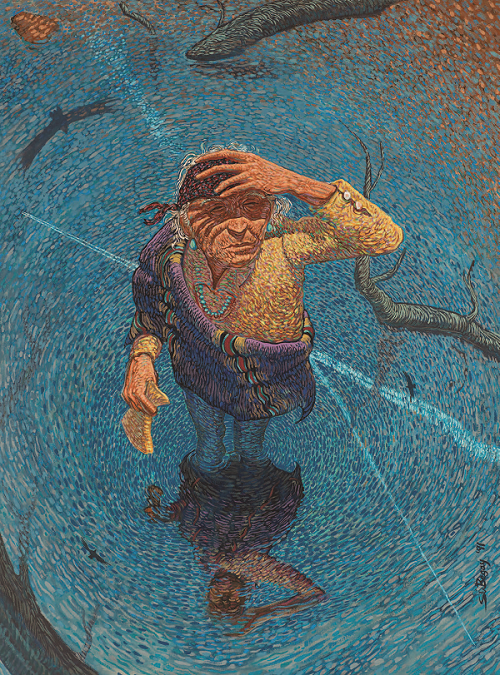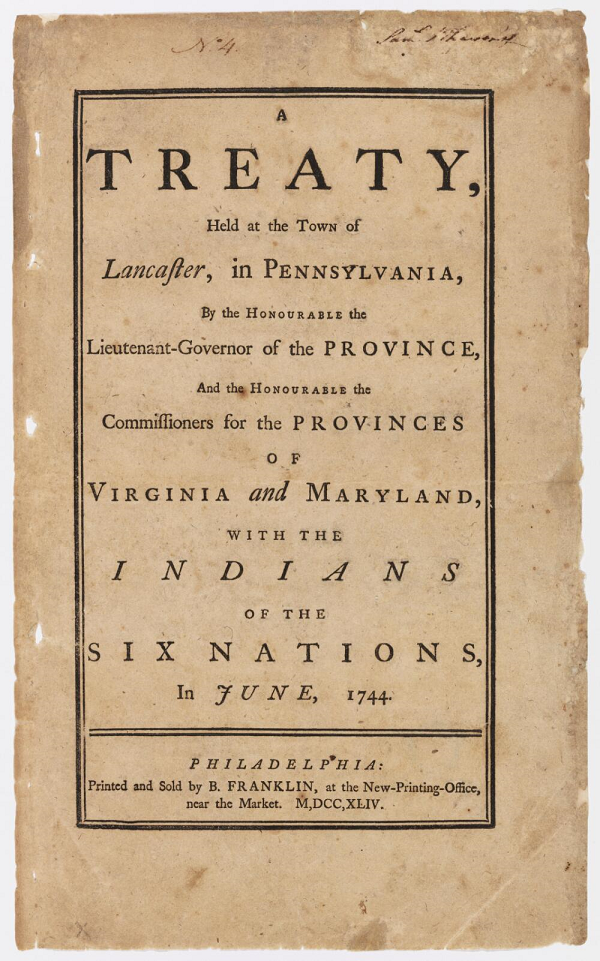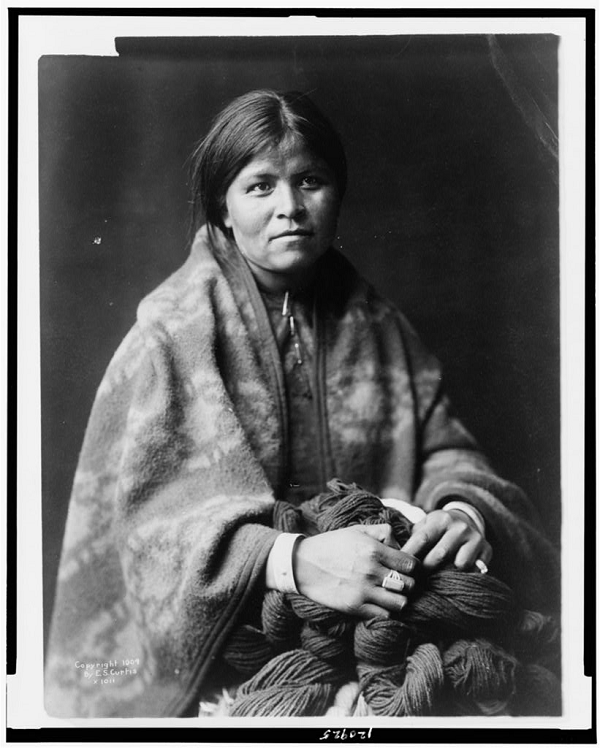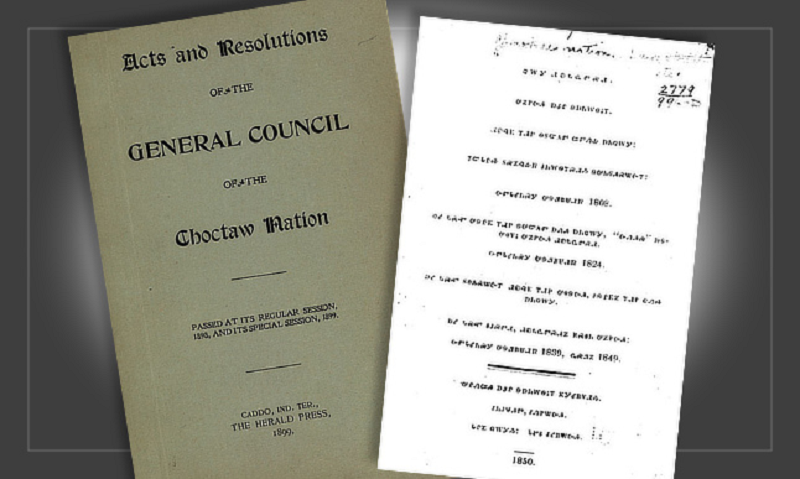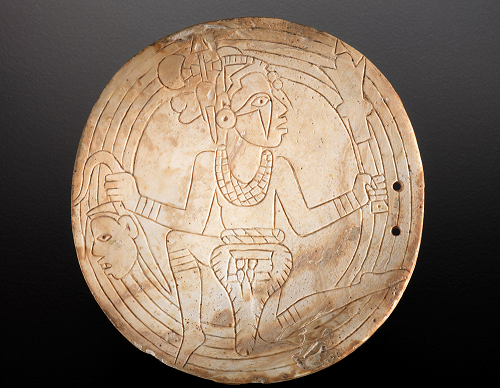University Libraries
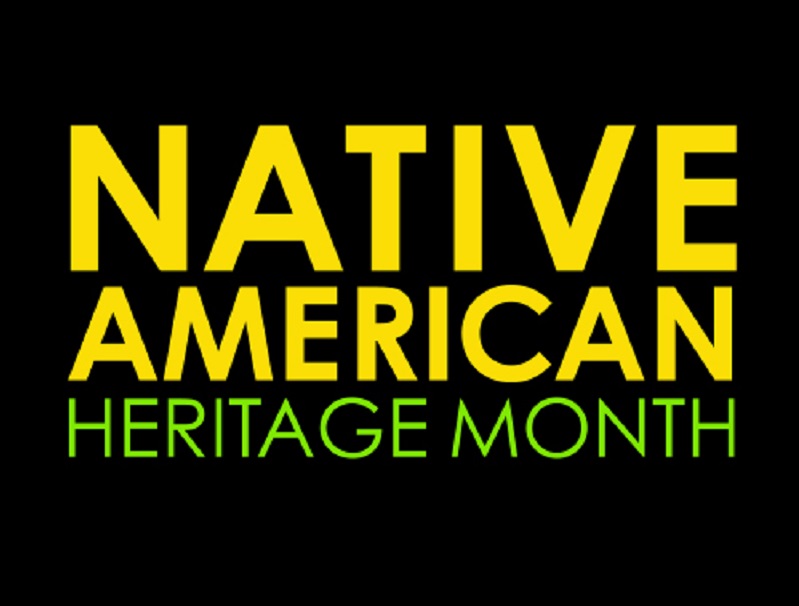
Monday November 1, 2021
Native American Heritage Resources: History, Images, Language, Arts
By Maureen Schlangen
In celebration of Native American Heritage Month, Roesch Library faculty and staff have compiled a collection of historical, cultural and literary resources: websites, digital archives, films and books. If you’d like to explore more, browse the Libraries website, stop by Information Point on the first floor or use Book a Librarian to make an appointment.
Websites and digital archives
- Ojibwe People’s Dictionary: The Ojibwe People's Dictionary is a searchable, talking Ojibwe-English dictionary that features the voices of Ojibwe speakers. It is also a gateway into the Ojibwe collections at the Minnesota Historical Society.
- Museum of Indian Arts and Culture: This New Mexico museum of Native art and material culture tells the stories of the people of the Southwest from prehistory through contemporary art.
- Indigenous Digital Archive: Treaties Explorer: While treaties between Indigenous peoples and the United States affect virtually every area in the United States, no official list of all the treaties exists yet. The National Archives holds 374 of the treaties.
- Law Library of Congress Native American Constitutions and Legal Materials: This collection includes most of the laws and constitutions from the early 19th century produced by the Cherokee, Choctaw, Chickasaw, Creek and Seminole who were forced out of the Southeast after passage of the Indian Removal Act in 1830.
- Native American Records at the National Archives: This collection contains information about Native Americans who maintained their ties to federally recognized tribes (1830-1970).
- Native Knowledge 360° (NK360°): This project of the Smithsonian Institution’s National Museum of the American Indian provides educational materials, virtual student programs, and teacher training on Native American history and cultures beyond the common lenses of popular media and textbooks.
- Curtis (Edward S.) Collection: This collection in the Library of Congress consists of more than 2,400 silver-gelatin, first-generation photographic prints made from American photographer Edward S. Curtis’ original glass negatives. It includes portraits, traditional and ceremonial dress, dwellings and other structures, agriculture, arts and crafts, rites and ceremonies, dances, games, food preparation, transportation and scenery.
- Library of Congress: Omaha Indian Music: This collection includes 44 wax cylinder recordings made in the 1890s; 323 songs and spoken-word segments from the 1983 Omaha harvest celebration, 24 spoken-word segments from an interview with an Omaha elder in 1983, 25 songs and speeches from a performance by members of the Hethu'shka Society (recorded at the Library of Congress in 1985), and 61 spoken-word segments from an interview conducted with an Omaha musician in 1999.
Films
The following films are available to UD students, faculty and staff through the Libraries’ subscription to Kanopy.
- Return: Native American Women Reclaim Foodways for Health & Spirit: This film features charismatic Roxanne Swentzell from Santa Clara Pueblo in New Mexico. Her efforts to reclaim ancient foodways are echoed across the continent by Tlingit, Muckleshoot, Oglala Sioux, Menominee and Seneca women. Their object: empowering people to overcome their current circumstances through eating as their ancestors did — nutritiously and locally.
- In Whose Honor? American Indian Mascots in Sports: This 1997 film takes a critical look at the long-running practice of using American Indians as mascots and nicknames in sports. It follows the story of Native American mother Charlene Teters and her transformation into the leader some have called the “Rosa Parks of American Indians” as she struggles to protect her cultural symbols and identity.
- Lake of Betrayal: Seneca People Fighting to Protect Their Ancestral Lands: Completed in 1965, the Kinzua Dam on the Allegheny River in Pennsylvania was proposed to help mitigate flooding in Pittsburgh — 200 miles downriver — but the 27-mile reservoir that formed behind it inundated vast tracts of Seneca ancestral lands, forcing their removal in breach of the United States’ oldest treaty then in effect. This film looks at the Seneca Nation’s fight to protect its sovereignty against the U.S. government’s Indian termination policy and the political and economic forces driving the post-World War II boom.
Databases
The following databases are accessible to UD students, faculty and staff through the Libraries website.
- America: History & Life provides historical coverage of the United States and Canada from prehistory to the present. It contains over 400,000 bibliographic entries of works published from 1964 to the present.
- Bibliography of Native North Americans contains journals, newspapers and books on native North American culture, history and life.
- North American Indian Thought and Culture contains biographical information on North American indigenous people from the 17th century to the present. It includes biographies, oral histories, reference works, manuscripts and photographs.
Books
- #NotYourPrincess: Voices of Native American Women (Lisa Charleyboy and Mary Beth Leatherdale, eds.): Native women demand to be heard in this anthology of poems, essays, interviews and art. Stories of abuse, humiliation and stereotyping are countered by the voices of passionate women making themselves heard and demanding change.
- There There (Tommy Orange): This Dayton Literary Peace Prize finalist follows 12 characters from Native communities, all traveling to the Big Oakland Powwow, all connected to one another in ways they may not yet realize. A chorus of voices tells of the plight of the urban Native American — grappling with a complex and painful history with an inheritance of beauty, spirituality, communion, sacrifice and heroism.
- Crooked Hallelujah (Kelli Jo Ford): This book follows four generations of Cherokee women across four decades. Justine, 15, grows up in a family of tough, complicated and loyal women, presided over by her mother, Lula, and Granny. Justine does her best as a devoted daughter until an act of violence sends her on a different path forever. Available on OhioLINK.
- Braiding Sweetgrass: Indigenous Wisdom, Scientific Knowledge and the Teachings of Plants (Robin Wall Kimmerer): As a botanist, Robin Wall Kimmerer has been trained to ask questions of nature with the tools of science. As a member of the Citizen Potawatomi Nation, she embraces the notion that plants and animals are teachers. In Braiding Sweetgrass, Kimmerer brings these two lenses of knowledge together.
— Maureen Schlangen is an institutional repository administrator and a member of the University Libraries’ diversity and inclusion team.
Share
Topics

